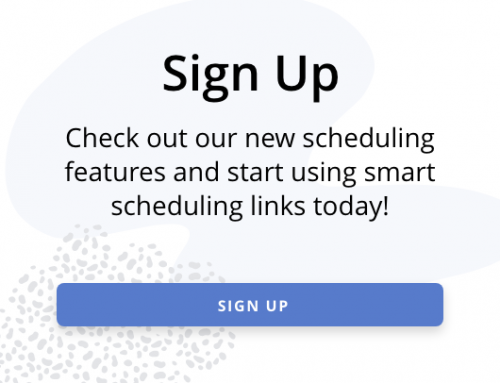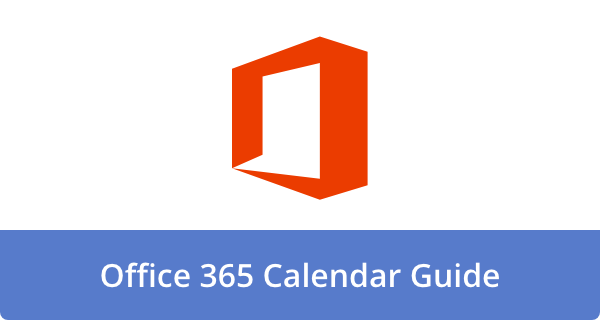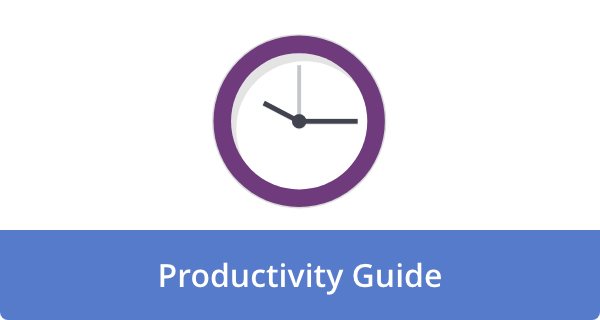

For many people, balancing daily demands seems simple enough: plan, execute, and move on. However, it can feel like an uphill battle for people with ADHD, who comprise approximately 15.5 million U.S. adults, or 6.0% of all adults. Even the smallest tasks can seem impossible to initiate and maintain — whether tackling your laundry mountain, going through your inbox, or starting a complex project.
The reason isn’t a lack of intelligence or desire. Instead, it has to do with how ADHD brains are wired. These brains often struggle with executive functions, which enable us to set priorities, plan, and organize. Eventually, you may feel overwhelmed, experience self-doubt, and procrastinate for extended periods.
However, body doubling offers practical assistance and hope in the face of these challenges. With this strategy, individuals can overcome barriers to productivity, initiate tasks, and maintain focus in ways that traditional productivity methods often fail to achieve.
As part of this blog post, we’ll learn what body doubling is, how it works, why it’s effective, and how you can use it in your daily life to get more done.
What Exactly Is Body Doubling?
At its core, body doubling is a productivity strategy in which someone with ADHD works alongside another person to stay focused, engaged, and ultimately complete tasks. One of the best aspects of body doubling is its simplicity: you don’t have to be an expert in your field, offer advice, or even actively participate. In addition to providing an external structure, a gentle layer of accountability, and a calming sense of companionship, their presence can calm feelings of overwhelm, isolation, and procrastination.
Think of it like a gym buddy. Even though you can exercise on your own, the commitment to meet someone, the unspoken expectation of their presence, and the shared experience make you more likely to show up. In the same way, a body double provides that same subtle motivational nudge, making it easier to overcome inertia and accomplish tasks. You’re not watching or judging; it’s about leveraging the instinctive need for connection and external structure to help you stay focused.
The Executive Function Landscape of ADHD: Why Tasks Feel Like Mountains
Think of your brain as a highly complex control tower that manages everything from your daily routine to regulating your emotions. However, those with ADHD face challenges with some of these critical “operators.” Examples include;
Task initiation.
There is perhaps no hurdle more frustrating than this. When you’re fully aware of the importance, the looming deadline, or even when you’re genuinely motivated, you find it impossible to start a task. Sometimes called “task paralysis,” it’s the feeling of being stuck at the starting line, unable to muster the “activation energy” to get started.
Working memory.
This refers to the brain’s ability to retain information and manipulate it to accomplish a task. In other words, remembering the steps of a complex instruction while simultaneously executing them. If you have difficulty here, you may forget what you just did or be unable to follow multi-part instructions.
Time blindness.
A poor sense of time is one of the hallmarks of ADHD. As a result, it is sometimes difficult to estimate how long tasks will take or even gauge the passage of time. In some cases, this manifests as hyperfocus, where hours pass unnoticed while one is engrossed in a stimulating activity. In others, though, chronic lateness results from underestimating task duration.
Prioritization.
When there are numerous demands to meet, it can be challenging to determine which tasks are most important or urgent. If you feel that everything is equally important (or equally unimportant), then you may experience decision paralysis or fail to accomplish any one task.
Distractibility.
There is more to this than just external noise. A sudden memory, a new idea, or even a phone notification can all distract people with ADHD from their present tasks.
Emotional regulation.
If someone with ADHD faces a difficult or uninteresting task, frustration, boredom, or anxiety can overwhelm them. To escape these uncomfortable feelings, people may give up prematurely or avoid tasks altogether.
As a result of these challenges, it is nearly impossible to maintain consistent productivity. As an antidote, body doubling provides an external scaffolding that the ADHD brain often lacks internally, which is precisely where body doubling steps in.
The Science Behind the Success: How Body Doubling Intervenes
Even if they are silently engaged in their own work, another person’s presence serves as a powerful intervention to counteract these executive function obstacles.
The isolation factor is reduced.
When left alone to deal with their internal struggles, ADHD symptoms can be exacerbated. Isolation can intensify feelings of being “stuck,” overwhelmed, or unmotivated, leading to a spiraling sense of futility. When another person is present, though, even if they are quietly working on something entirely different, a subtle but profound social connection is formed. As a result, loneliness becomes less of an issue, and tackling a task alone becomes less overwhelming.
It’s like having a copilot in the cockpit, even if all they’re doing is reviewing charts. In other words, if someone is “on duty,” the journey can be less daunting.
Establishes external structure and accountability.
ADHD brains often thrive on external structure. Without it, planning, organizing, and staying focused can seem impossible. But with a body double, you get a soft, non-judgmental way to be accountable. A subtle, encouraging pressure is created by the unspoken understanding that “we’re both here to work.” It’s not harsh or critical, but a gentle nudge that helps you resist procrastination or mindless scrolling.
As a kind of external anchor, the body double consistently reminds you of the session’s purpose. Essentially, it serves as a subtle cue that reinforces the “work mode.”
Reduces task paralysis.
Often, those with ADHD have difficulty starting a task simply because of the daunting nature of it. In some cases, this “activation energy” can feel impossible to overcome.
Having a body double present makes starting significantly easier. By creating a shared environment and by implying that productive activity is taking place, it helps bridge the gap between intention and action. Simply opening the correct document, opening the necessary software, or typing the first sentence can accomplish the task.
In contrast, once that initial barrier is broken, momentum usually takes over, and the work flows much more smoothly than it would have in isolation. It’s possible to get the brain flowing when another person is present.
Promotes time awareness.
When time blindness sets in, hours can either disappear in a blur of hyperfocus or stretch into an infinite, shapeless void. But, it’s much easier to stay aware of time when working with others — especially if you’ve established session lengths or have a visible timer.
Grounding yourself in the present moment prevents you from falling into time-distorting tunnels of hyperfocus or endless spirals of procrastination that stem from a feeling of infinite time. As a living, breathing clock, the other person’s presence serves as a subtle, consistent reminder of the session’s timing.
Boosts motivation and reduces aversion.
According to a 2018 review, a lack of motivation is one of the key attributes of ADHD, manifesting as a decreased psychological reward associated with completing tasks. This makes starting and sustaining uninteresting work incredibly difficult. However, it’s possible to shift this dynamic if someone else is present subtly.
Even a silent social connection can foster a sense of shared purpose and increase perceived interest. By doing so, you may be more likely to tolerate inherently tedious tasks, thereby overcoming internal resistance that can lead to avoidance and procrastination. Even though it isn’t necessarily more fun when you do it with someone else, the context makes it more enjoyable.
Essentially, body doubling compensates for the internal executive function challenges of ADHD by providing a simple yet profound external scaffolding. By leveraging human needs for connection and responsibility, it creates a workplace where focus is easier to attain, tasks are less intimidating to begin, and time is more tangible. This is a testament to the power of human connection, even in its quietest forms, to unlock potential and boost productivity.
Real-World Examples: You Might Already Be Doubling!
You have likely encountered or even used body doubling in various forms without consciously labeling it. Here are a few common scenarios;
- Coworking at a café. Meeting with a friend or colleague at a coffee shop, where you each work on your own project. In this environment of productive quiet, both of you can focus.
- Study groups. In addition to sharing knowledge, groups make it easier for individuals to stay focused and minimize distractions.
- “Clean with me” videos. YouTube videos featuring creators cleaning their homes and encouraging viewers to follow suit. This creates an illusion of working alongside someone, motivating and accompanying you.
- Virtual focus sessions. Zoom rooms or online platforms where people can join together in silence or check in at the start and end of meetings. This type of device is designed specifically for virtual body doubling.
Who Stands to Benefit Most?
In addition to being surprisingly effective for anyone struggling with procrastination, body doubling has a special impact on certain groups:
- Individuals with ADHD. This is especially true for those who consistently struggle with task initiation, maintaining focus, and time management.
- Students. Specifically, those who find it challenging to study alone in their dorm room or at home.
- Remote workers. Those who experience isolation and a lack of external structure in their home office environment.
- Creatives. Those who find traditional, rigid productivity tools unhelpful and thrive on a flexible, yet supportive, structure.
- Adults managing household chores or life admin. When it comes to mundane but necessary tasks such as taxes and decluttering, body doubling can make them seem less daunting.
How to Maximize Your Body Doubling Sessions
It doesn’t matter whether you’re new to the concept or looking to make your practice more effective; these tips will help you achieve the full potential of body doubling:
Choose the right body double.
You don’t always need to be friends with your body double — unless they’re also an awesome work partner. Ultimately, what matters most is their reliability, consistency, and ability to maintain a work-focused mindset. Among them are;
- A trusted colleague or classmate.
- Someone who understands the challenges of ADHD.
- A supportive friend or family member who understands your need for focus.
- Professional ADHD coaches who use this approach.
- If you prefer virtual sessions, check out Focusmate or Caveday, which connect you with others for co-working.
Establish clear, but brief, intentions.
Take a moment to verbally or mentally outline your goals before beginning a session. In this way, both you and your double benefit. The following points should be discussed briefly;
- The specific task(s) you’ll be working on.
- The length of the session (e.g., 25 minutes, 1 hour).
- Specific mini-goals you’d like to attain (e.g., writing two paragraphs or going through 10 emails).
Communicate as little as possible during work periods
Body doubling is primarily about focusing, not socializing. As such, begin with a check-in, then listen to soft, nondistracting background music, or work silently. You should save deeper conversations for breaks or after the session is over. It’s about being present, not constant interaction.
Incorporate a timer.
For those with time blindness, a shared timer can boost mutual accountability and structure. Using the Pomodoro Technique (25 minutes of focused work followed by a 5-minute break) is a popular approach that integrates well with body doubling. When the timer counts down or chimes, people are reminded to be mindful of their time.
Repeat regularly for compound effects.
When it comes to building muscle at the gym, consistency is key. So, establish recurring body doubling sessions, whether daily, periodically, or for specific tasks. As you practice regularly, your brain is wired to associate the presence of your body double with focused work.
Debunking Common Misconceptions
Although body doubling is effective, it is sometimes misunderstood
- “Body doubling is just for kids.” Absolutely not. Despite its benefits for children with ADHD, supervised work is also effective for adults with complex responsibilities, such as careers and families.
- “It’s just a productivity gimmick.” That’s far from the truth. Body doubling is based on real behavioral psychology and neurological insights about ADHD. This isn’t about tricking your brain, but rather providing consistent, external support and structure that it often requires.
- “You have to talk or interact the whole time.” This is incorrect. It is often most effective to have silent or low-interaction sessions. What matters most is the shared presence, not the ongoing conversation.
Tech and Tools for Modern Body Doubling
As remote work and digital communities have grown, virtual body doubling has become increasingly accessible. The following are some popular tools and platforms for ADHD time management:
- Calendar. This productivity tool reduces the need for endless emails with features like Find a Time and One-Click Scheduling. Also, with Calendar Analytics for Teams, you can easily see where, when, and with whom you meet. This knowledge enables users to schedule more effectively, prioritize tasks efficiently, and boost overall productivity.
- Focusmate. Using this platform, you can co-work with a virtual body double one-on-one for structured 25- or 50-minute sessions. With its quiet design, efficiency, and surprising effectiveness, it promotes focus.
- Caveday. Provides guided deep work sessions with a supportive community. Further, the structured environment has specific start and end times, as well as short breaks.
- Flown. Provides self-directed “Drop-In” sessions and group-led “Focus Sessions” that often incorporate guided meditation and planning.
- dubbii. This app provides you with video “body doubles” (often prerecorded) to assist with various tasks, such as self-care or household chores.
- Flow Club. It offers structured, live sessions that allow you to work with others.
- TikTok/YouTube “Study With Me” or “Work With Me” streams. Streaming live or prerecorded sessions where content creators work silently creates an illusion of a shared workspace and a body double for viewers.
- An online community dedicated to ADHD. ADHD-related online forums, Discord servers, and social media groups often host live work rooms for members to check in and collaborate.
Final Thoughts: Work With Your Brain, Not Against It
Living with ADHD does not imply laziness, incapacity, or lack of motivation.
It means your brain processes information differently and manages tasks differently. Rather than constantly battling these differences, find strategies that align with your unique neurological makeup.
One of those powerful tools is body doubling. Due to the proliferation of digital platforms and supportive communities, it is now elegantly simple, remarkably effective, and increasingly accessible. Whatever you’re tackling at the moment, whether it’s a daunting work project, a pile of administrative tasks, or even just getting through your daily household chores, a subtle yet impactful presence can make a world of difference.
If you struggle to maintain focus or consistently procrastinate, consider giving body doubling a try. It might just be the simple, game-changing tool you’ve been looking for to boost your productivity and improve your quality of life.
FAQs
What is ADHD Body Doubling?
Body doubling is a productivity strategy that involves an individual with ADHD performing a task when another person, their “body double,” is present. In most cases, the body double spends most of their time working on their own activities and does not directly assist with the task at hand.
They are primarily helpful through their passive presence, which helps people with ADHD:
- Initiate tasks. Be able to overcome the executive dysfunction that contributes to procrastination.
- Maintain focus. Resist the temptation to switch tasks and minimize distractions.
- Sustain motivation. Maintain a subtle sense of accountability while making mundane tasks feel less overwhelming.
Who Can Be a Body Double?
It could be anyone. Your body double does not necessarily need to be an expert or even understand ADHD deeply. The most important thing is their willingness to participate in this arrangement.
However, a good body double should be;
- Friends or family members. Someone who understands your needs, such as a spouse, sibling, parent, or close family member or friend.
- Coworkers or classmates. An excellent fit for shared workspaces, whether physical or virtual.
- Fellow neurodivergent individuals. When people with ADHD or other neurodivergent conditions connect, there is often great camaraderie and effectiveness.
- Professional services. ADHD coaches and virtual assistant services often incorporate body doubling into their services.
- Online communities/apps. There are dedicated platforms for virtual body doubling, such as Focusmate or Discord servers.
What Do You Do During a Body Doubling Session?
Depending on your needs, we can customize the specifics, but generally it involves;
- Set an intention. Before the session, each party briefly states what they plan to accomplish. Although this isn’t a rigid contract, it sets a clear tone for the project.
- Work silently. Body doubles work on their own tasks, while people with ADHD focus on their own. It is usually best to avoid distractions by talking as little as possible.
- No direct help (typically). Your body double isn’t there to help you with your work or to answer questions. Instead, they serve as passive presences.
- Agreed-upon check-ins (optional). To report progress, some pairs prefer a quick check-in halfway through or at the end of the session.
- Breaks. As with individual work sessions, incorporate planned breaks.
Does Body Doubling Work for Everyone with ADHD?
Despite its effectiveness, body doubling is not a universal solution for ADHD. Among the factors that might affect its effectiveness are:
- Distraction level. Many people find the mere presence of another person, even if they are quiet, more distracting than helpful. Additionally, the body double should not be a source of further distraction (e.g., constantly checking their phone, initiating conversations).
- Need for solitude. The best place for some people with ADHD to focus is in complete solitude and silence.
- Compatibility with doubles. An individual with ADHD and his or her body double must have a dynamic relationship. It is vital to have a body double who is non-judgmental, understanding, and focused.
- Task type. Sometimes, tasks that require intense, uninterrupted flow would be better suited for solo work or would need very specific, quiet body doubling arrangements.
Ultimately, you should experiment and discover what works best for you.
Are There Any Potential Downsides to Body Doubling?
Although generally beneficial, there are some potential drawbacks to consider:
- Over-reliance. If you become too dependent on body doubling, you may be less able to initiate or complete tasks independently without a double.
- Socializing vs. working. When your body double is a close friend, the session can easily become more of a chat and social event than a productive one. As such, it’s essential to establish clear boundaries.
- Shame/pressure. When approached with a judgmental attitude, the accountability aspect may inadvertently increase feelings of shame.
Image Credit: Weavehall Collective; Pexels











Deanna Ritchie
Editor-in-Chief at Calendar. Former Editor-in-Chief, ReadWrite, Editor-in-Chief and writer at Startup Grind. Freelance editor at Entrepreneur.com. Deanna loves to help build startups, and guide them to discover the business value of their online content and social media marketing.